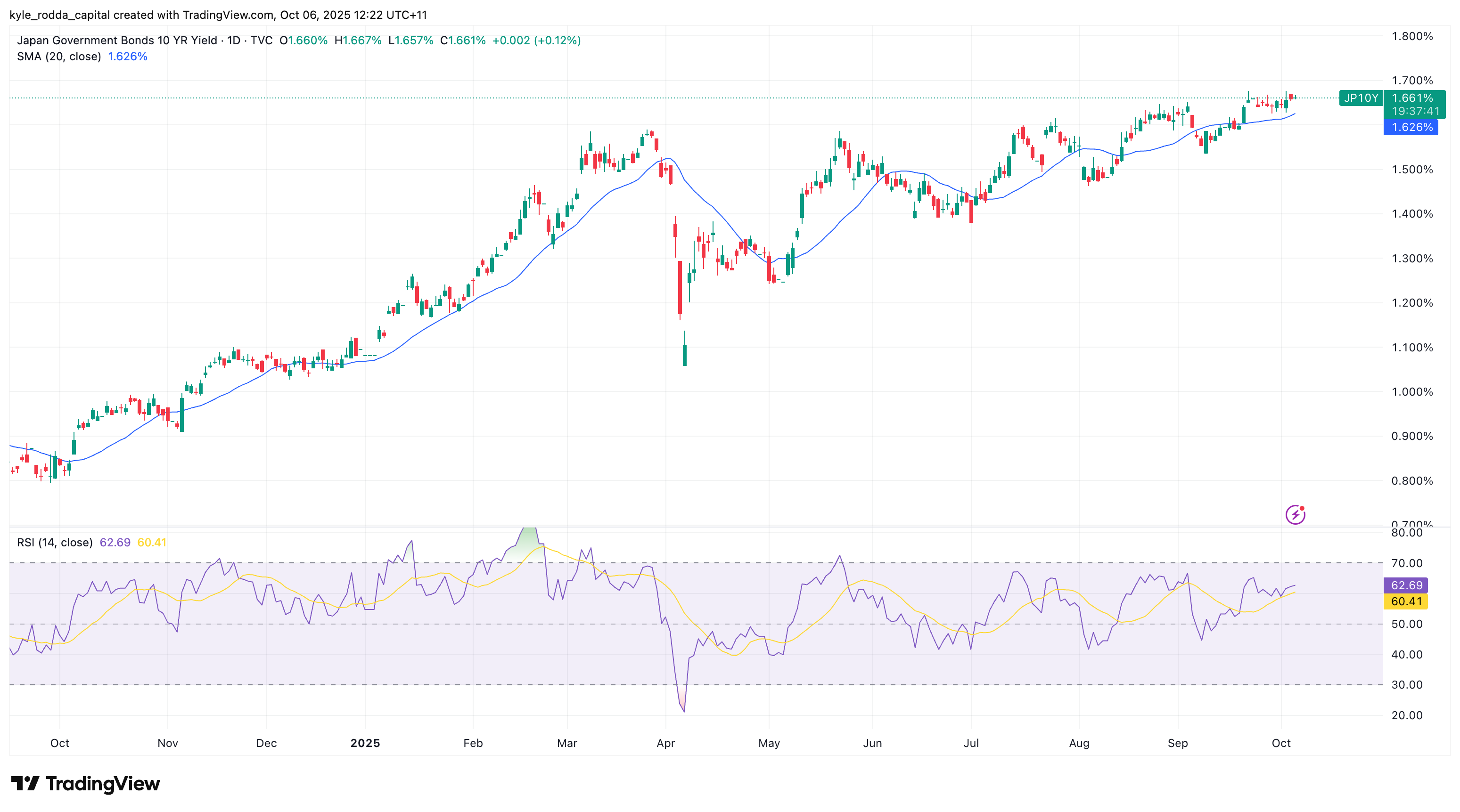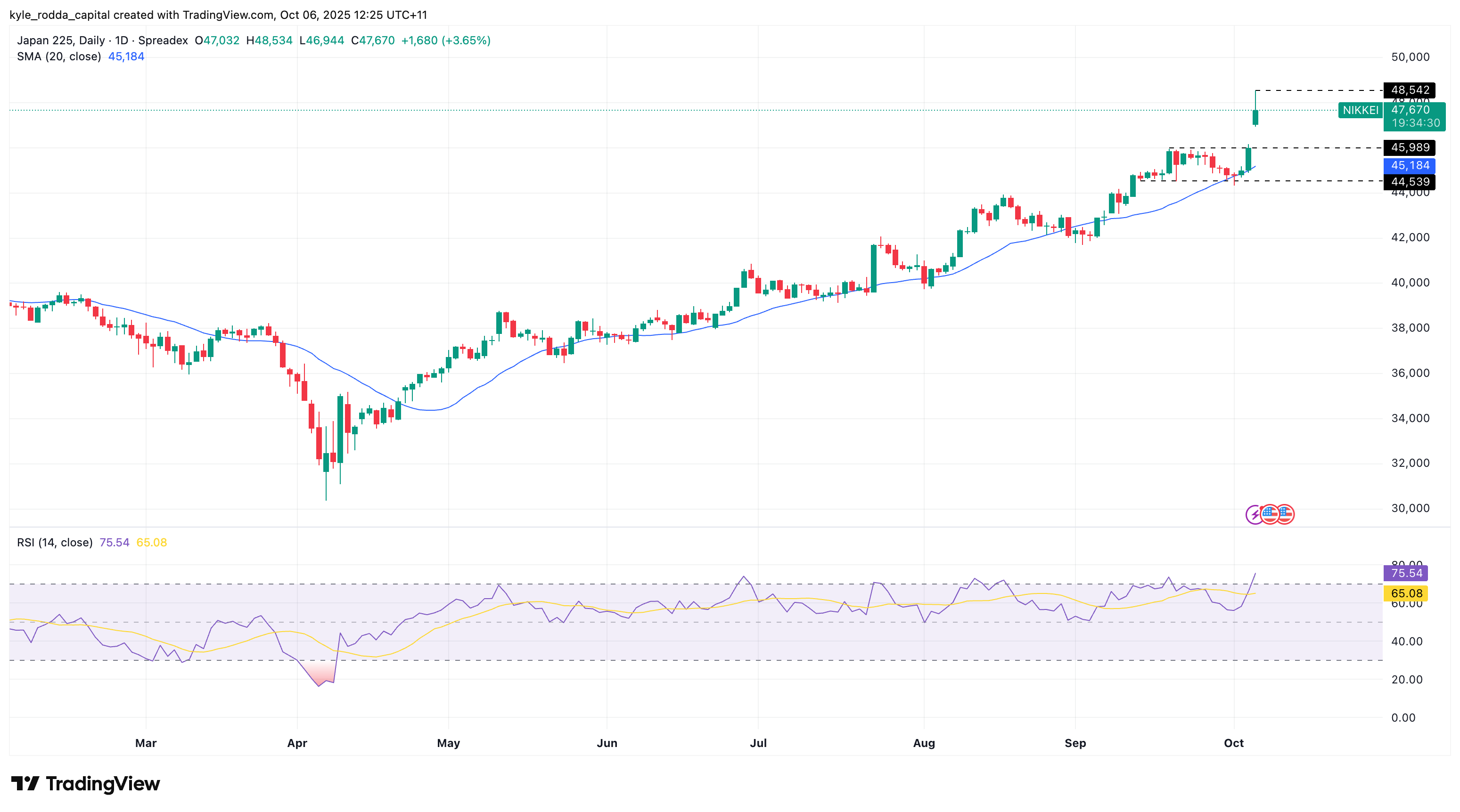Japan’s new leader sparks major market reaction as Nikkei hits record highs
Japan's Liberal Democrat Party elects Sanae Takaichi as its new leader, opening the door for more fiscal stimulus.
Japanese financial markets have moved sharply after Sanae Takaichi was elected leader of the ruling Liberal Democratic Party, paving the way for her to become Japan’s next prime minister.
Takaichi’s big-spending agenda adds heat to a hot market
Takaichi’s policy stance points to a continuation—and likely expansion—of Japan’s already-loose fiscal settings. She has long championed lower taxes, cash handouts for households, and aggressive investment in strategically important sectors such as artificial intelligence, semiconductors, and nuclear energy.
The prospect of deeper deficit spending comes at a delicate time, with bond markets already under pressure from large issuance volumes and the Bank of Japan’s gradual retreat from quantitative easing. A renewed fiscal push could add further pressure on inflation, strain Japan’s fiscal settings, and increase volatility in government bond markets.

(Source: Trading View)
Past performance is not a reliable indicator of future results.
Fiscal expansion could clash with the BOJ’s cautious stance on tightening
Takaichi’s views on monetary policy add another layer of complexity. She has previously argued for rate cuts, and while her recent tone has softened, she remains firmly opposed to policy tightening. Her leadership could reinforce expectations that the Bank of Japan will remain on hold for longer than markets had anticipated.
BOJ Governor Kazuo Ueda has recently acknowledged that monetary settings remain accommodative, even as inflation—though moderating—sits above the 2% target. However, his reluctance to provide a timeline for rate hikes has weakened expectations of imminent policy tightening.
Investors dump the Yen and pile into equities on stimulus hopes
The market reaction was immediate and decisive. The Japanese yen gapped lower at the start of the trading week as traders priced in the likelihood of extended monetary accommodation combined with a large fiscal boost.
The Nikkei 225 surged to record highs, reflecting optimism around stimulus-driven growth and continued liquidity support. Meanwhile, Japanese government bond yields edged higher as investors weighed the risk that a fresh wave of deficit spending could unsettle the bond market and test financial stability if yields rise too quickly.

(Source: Trading View)
Past performance is not a reliable indicator of future results.